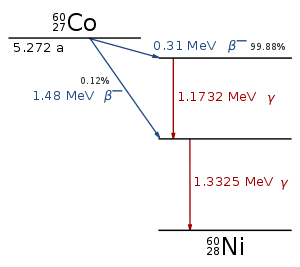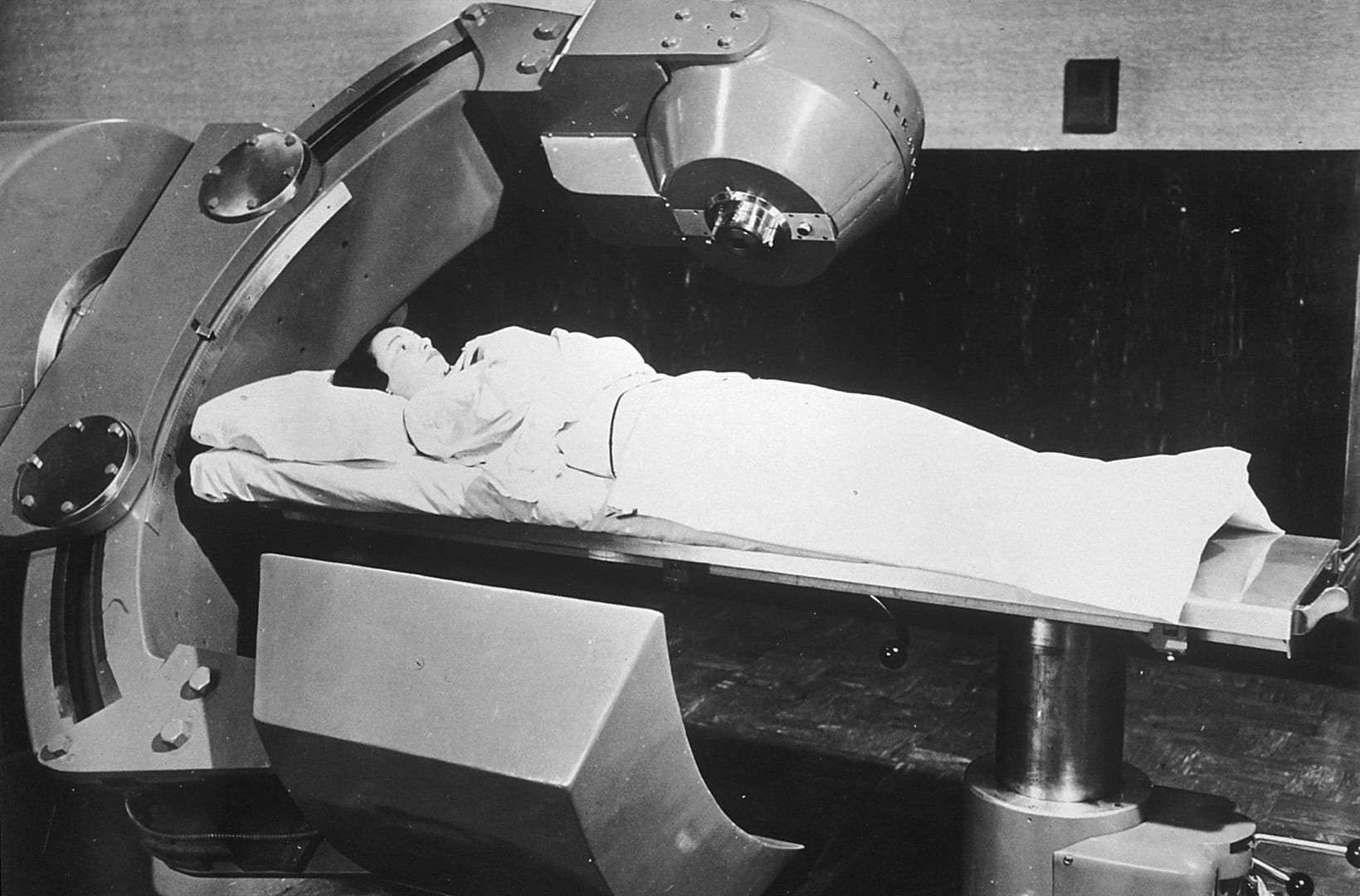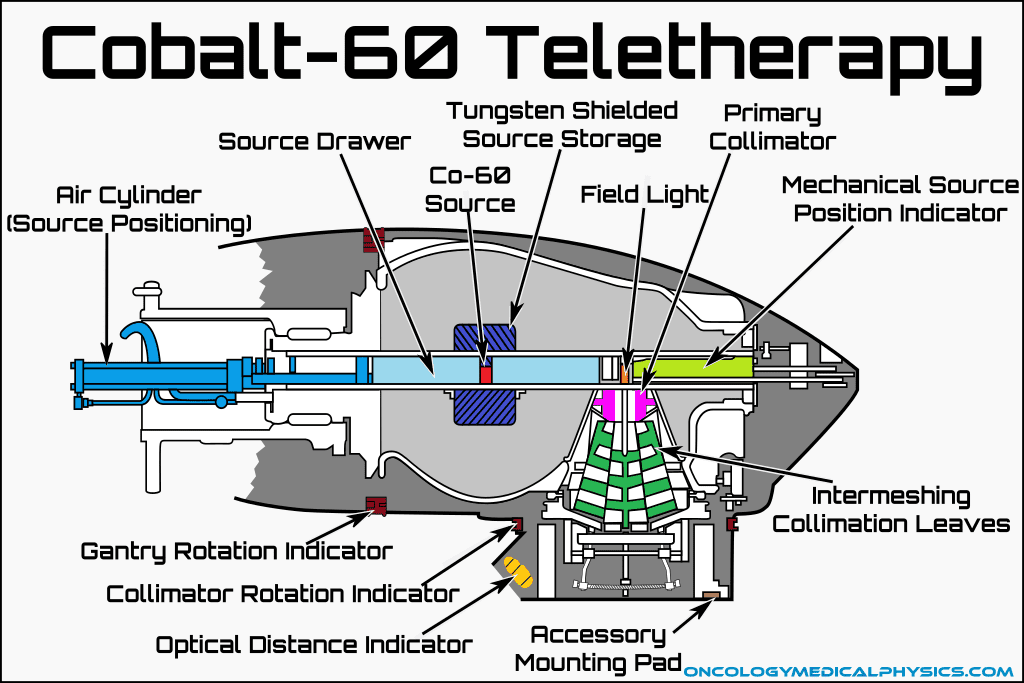Cobalt-60 Teletherapy Machines
Machine Design
Cobalt 60 teletherapy units appear similar to early generation clinical linear accelerators. Most feature a rotating gantry and variable jaw collimation located in the treatment head. A light field and optical distance indicator is incorporated into the treatment head to facilitate patient alignment. The machine may also include a primary beam stop and/or a means of portal imaging. Most Co-60 units use a source-to-axis-distance of 80cm which compensates for the lower output as compared with a linear accelerator.
When not in use, the source is stored in a heavily shielded compartment of the treatment head. Activation and deactivation of the beam is accomplished by mechanically or pneumatically moving the source from its shielded storage space to the treatment position. Moving the source into and out of position causes a slight delay turning the beam on and off. This delay, referred to as the shutter time, and it must be accounted for in dosimetric calculations.
The source drive mechanism is designed to require constant power input to keep the source in treatment position. This design causes the source to automatically retract to a safe position in the event of power loss.
Some radiation will continue to leak from the treatment head even when the source is in the off position. This leakage is typically less than 1mR/h (0.01mSv/h) at a distance of 1m from the source.
Delivered dose is computed by multiplying the current dose rate of the source (corrected for decay, field size, and depth) by the time the source is exposed including shutter time. Two timers are used to assure that the timing is accurate and to terminate the treatment if a timing discrepancy is identified.
Key Point: With the exception of a few specialized machines (Gamma knife, MR guided teletherapy), Co-60 teletherapy units are now uncommon in the developed world. Yet, because of their simplicity, traditional Co-60 units remain in common use in developing countries with unstable power grids and lower availability of skilled labor.
Radiation Source
Cobalt-60 teletherapy units are able to generate a clinical photon beam with a mean energy of 1.25MeV, similar to the mean energy of a 4MeV photon beam generated by a linear accelerator. Approximately 10% of the source photons are lower energy scattered photons. The buildup region of the photon dose distribution extends to a depth of 5mm, providing some skin sparing.
Cobalt 60 is produced in a nuclear breeder reactor by neutron bombardment of cobalt 59 and has a half life of 5.27 years. Co-60 is a superior radionuclide to alternatives, such as Ra-226 and Cs-137, because of its higher energy and specific activity (mCi/g) which allows for greater radiation output with a smaller source size.
Typical sources have an activity of 5,000-10,000Ci which is able to produce a dose rate of 100-200cGy/min for an source-to-axis distance of 80cm. Sources are cylindrical in shape with a diameter of 1-2cm and a height of about 2.5cm. This diameter is significantly larger than modern linear accelerator source sizes and causes the Cobalt 60 teletherapy machines to have larger penumbras.
Sources are usually replaced about once per half-life or about every 5 years for Co-60.
Cobalt 60 Properties
- Half life: 5.2714 years
- Decay Mode: β-
- Mean gamma energy: 1.25MeV (1.17MeV and 1.33MeV)
- ~10% of the beam is resultant of scattered photons.
- Lead HVL: 11.0mm
- Exposure rate constant:
- External beam source size: 1-2cm2

Navigation
Not a Premium Member?
Sign up today to get access to hundreds of ABR style practice questions.


